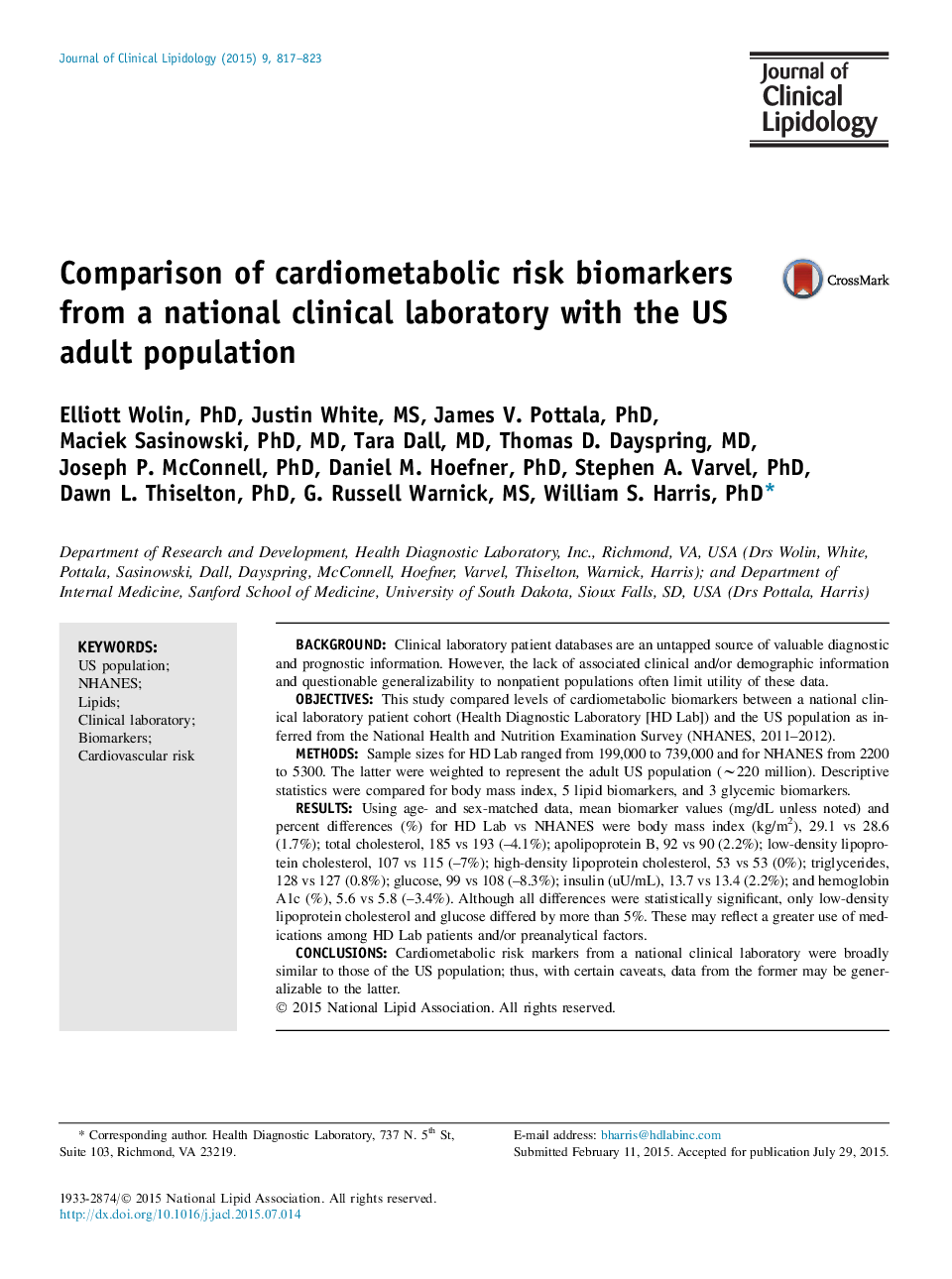| Article ID | Journal | Published Year | Pages | File Type |
|---|---|---|---|---|
| 5985808 | Journal of Clinical Lipidology | 2015 | 7 Pages |
â¢It is unclear how data from clinical laboratories reflect the adult US population.â¢Biomarker data from >200,000 laboratory patient samples was compared with age- and sex-matched data from NHANES.â¢For most lipid and glycemic markers, the 2 cohorts differed by <5%.â¢Data collected in clinical laboratories are likely to be generalizable to the US population with few caveats.
BackgroundClinical laboratory patient databases are an untapped source of valuable diagnostic and prognostic information. However, the lack of associated clinical and/or demographic information and questionable generalizability to nonpatient populations often limit utility of these data.ObjectivesThis study compared levels of cardiometabolic biomarkers between a national clinical laboratory patient cohort (Health Diagnostic Laboratory [HD Lab]) and the US population as inferred from the National Health and Nutrition Examination Survey (NHANES, 2011-2012).MethodsSample sizes for HD Lab ranged from 199,000 to 739,000 and for NHANES from 2200 to 5300. The latter were weighted to represent the adult US population (â¼220 million). Descriptive statistics were compared for body mass index, 5 lipid biomarkers, and 3 glycemic biomarkers.ResultsUsing age- and sex-matched data, mean biomarker values (mg/dL unless noted) and percent differences (%) for HD Lab vs NHANES were body mass index (kg/m2), 29.1 vs 28.6 (1.7%); total cholesterol, 185 vs 193 (-4.1%); apolipoprotein B, 92 vs 90 (2.2%); low-density lipoprotein cholesterol, 107 vs 115 (-7%); high-density lipoprotein cholesterol, 53 vs 53 (0%); triglycerides, 128 vs 127 (0.8%); glucose, 99 vs 108 (-8.3%); insulin (uU/mL), 13.7 vs 13.4 (2.2%); and hemoglobin A1c (%), 5.6 vs 5.8 (-3.4%). Although all differences were statistically significant, only low-density lipoprotein cholesterol and glucose differed by more than 5%. These may reflect a greater use of medications among HD Lab patients and/or preanalytical factors.ConclusionsCardiometabolic risk markers from a national clinical laboratory were broadly similar to those of the US population; thus, with certain caveats, data from the former may be generalizable to the latter.
